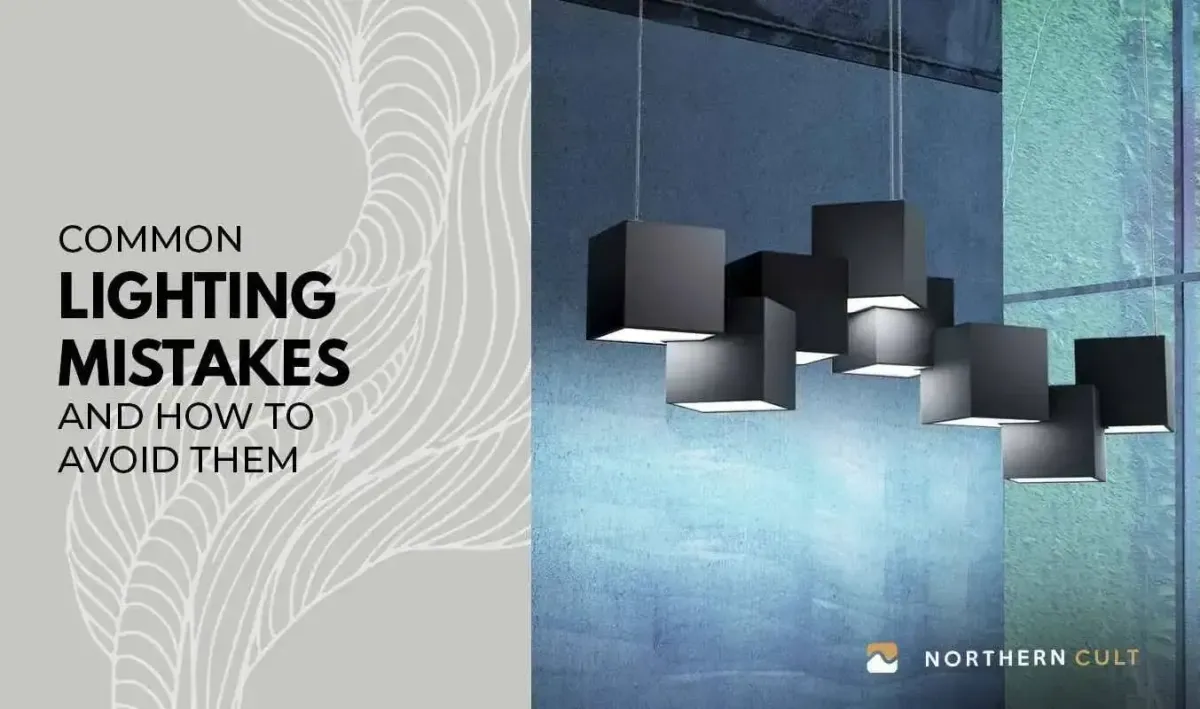
Avoiding Common Lighting Mistakes: Tips from the Experts
Avoiding Common Lighting Mistakes: Tips from the Experts
Lighting plays a crucial role in creating the right atmosphere and functionality in any space. However, many people make common mistakes when it comes to lighting their homes or offices. In this blog post, we'll explore these errors and provide expert tips on how to avoid them, ensuring your space is well-lit and inviting.
Common Lighting Mistakes
Relying Solely on Overhead Lighting
One of the biggest mistakes I've seen in many homes is the overuse of overhead lighting. I remember visiting a friend's new apartment, and the harsh ceiling lights made the space feel cold and uninviting. Overhead lighting alone can create unflattering shadows and fail to highlight the room's best features.
Tip: Use a mix of light sources, including table lamps, floor lamps, and wall sconces, to create layers of light and add depth to your space.
Ignoring Task Lighting
Another common error is neglecting task lighting. I once tried to work on a detailed craft project in my living room, relying only on ambient light. The strain on my eyes was unbearable, and the results were less than satisfactory.
Tip: Incorporate dedicated task lighting in areas where you perform specific activities, such as reading nooks, workspaces, or kitchen counters.
Overlooking Natural Light
Many people underestimate the power of natural light. In my previous home, I had heavy curtains that blocked out most of the sunlight, making the space feel gloomy and smaller than it actually was.
Tip: Maximize natural light by using sheer curtains or adjustable blinds that allow you to control the amount of sunlight entering your space.
Choosing the Wrong Bulb Color Temperature
Selecting the right color temperature for your bulbs is crucial. I once bought "daylight" bulbs for my bedroom, thinking they would brighten up the space. Instead, the cool, bluish light made the room feel clinical and uncomfortable.
Tip: Choose warm white bulbs (2700-3000K) for living areas and bedrooms, and cooler white bulbs (3500-4100K) for workspaces and kitchens.
Improper Dimmer Usage
Dimmers can be a great addition to your lighting setup, but using them incorrectly can lead to problems. In my dining room, I initially installed a dimmer switch without checking if my LED bulbs were compatible, resulting in flickering lights during dinner parties.
Tip: Ensure your bulbs are compatible with dimmer switches, and choose quality dimmers to avoid flickering or buzzing.
Expert Tips for Better Lighting
Layer Your Lighting
Creating a well-lit space involves using multiple light sources at different levels. In my living room, I've combined ceiling lights, wall sconces, and table lamps to create a warm and inviting atmosphere.
Use ambient lighting for overall illumination
Add task lighting for specific activities
Incorporate accent lighting to highlight artwork or architectural features
Consider Scale and Proportion
The size of your light fixtures should be in proportion to your room and furniture. I once bought a small chandelier for my large dining room, and it looked completely out of place.
Tip: Measure your space and furniture before purchasing light fixtures to ensure they fit well within the room.
Pay Attention to Shadows
Poorly placed lights can create unwanted shadows. In my home office, I initially had a desk lamp on the wrong side, which cast shadows on my work area.
Tip: Test different light positions to minimize shadows, especially in task-oriented areas.
Use Lighting to Define Zones
In open-plan spaces, lighting can help define different areas. When I moved into a loft apartment, I used different types of lighting to separate the living, dining, and sleeping areas effectively.
Tip: Use pendant lights over dining tables, floor lamps in reading corners, and accent lights to highlight specific zones within a large space.
Don't Forget About Outdoor Lighting
Outdoor lighting is often overlooked but can greatly enhance your home's curb appeal and safety. After installing landscape lighting in my garden, I was amazed at how it transformed the space and made it usable even after dark.
Tip: Use a combination of path lights, uplights, and accent lights to create a welcoming and safe outdoor environment.
By avoiding these common lighting mistakes and implementing expert tips, you can transform your space into a well-lit, comfortable, and inviting environment. Remember, good lighting is about creating layers, considering functionality, and enhancing the overall atmosphere of your home or office.